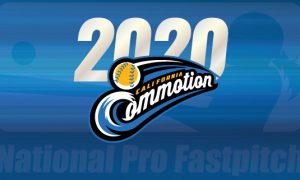The Ideal National Pro Fastpitch League

The 2016 National Pro Fastpitch (NPF) season concluded dramatically with the Chicago Bandits taking their second straight Cowles Cup. By all accounts, it was an excellent season for the NPF. Recently Kayla Lombardo of Excelle Sports published an interview with league commissioner Cheri Kempf that got us thinking. In that interview, Kempf stated “There should be 20 teams in this league,” Kempf said. “I think 20 teams can be supported in this league. Look at how many minor league baseball teams are thriving and making profits on sixth and seventh and 10th-level baseball players who no one knows. So to say that we could have 20 teams, sometimes people laugh at me when I say that, but I think that’s realistic.” It is great to hear that expansion and growth are being discussed. The NPF has many things going for it and appears headed in the right direction.
(Check out one of our Opinions: NPF Needs us and why it’s Important)
Ideal League Structure
Over the past year, we have pondered what the ideal NPF would look like. Kempf’s remarks about the number of teams fit somewhat with the vision we would like to see. The difference is we believe the target of 24 teams, in the end, could make the most sense.
Why 24 teams, you ask? Simple, we believe that to grow and thrive, conferences need to be formed. This number of teams would allow for six conferences. Each conference would be made up of four teams that make geographical sense and maximize exposure. This would also help create rivalry among conference foes.
Keep in mind this is just a vision and not something the NPF plans on doing at this point.
This format also lends itself to a true playoff and championship format. All conference winners would advance to the NPF championship. The two teams that did not win their conference with the best records would advance to the NPF Championship series. The format of the championship series would be the same format used for WCWS. The reason is simple; fans are engaged in the WCWS and understand how it works. Why not keep things simple and understandable for the fans?
The championship would be seeded. The team with the best record would open with the second “wild card” team. The two seed would face the top wildcard team. The next four would be seeded against one another based on the overall record. Below is a sample playoff
The Conferences and Teams (Just suggestions)
- Western Conference: San Diego, Los Angeles, Las Vegas, Phoenix
- Northwest Conference: Portland, Seattle, San Francisco, Sacramento
- Southern Conference: Houston, Dallas, Oklahoma City, San Antonio
- Midwest Conference: Chicago, Minneapolis, Kansas City, Des Moines or Omaha
- Eastern Conference: Pennsylvania, Akron, New York, New Jersey
- Southeastern Conference: USSSA Pride, Atlanta, Tampa, Miami
As stated, these are meant to make sense geographically. These six conferences could then be paired. So, teams would play a heavy conference schedule and crossover games as well. But by scheduling non-conference games with teams in your paired conference, travel costs could be reduced, and each team has seven different teams they could face throughout the year. The Western and Northwest would be a pair, Southern and Midwest and Eastern and Southeastern.
The Season
The season would consist of 50 regular-season games. Each team would play 30 of those games against conference opponents. They would be required to play 12 games against their paired conference, and eight games could be open to the league when they generate the schedule. By having more regional schedules travel costs can be reduced, rivalry can be established, and local fan bases can be better established.
In the end, this is what we think would be an ideal scenario for the future of the NPF. How feasible is it? That is a question we do not fully have an answer to, and we do realize it would take years to make it to that level. Of course, there are many barriers, with the main one being people and or groups willing to become team owners. Even though the NPF is not MLB from a cost standpoint, it still would take a significant amount of capital to form, fund, and support a professional team.
The last realistic question that we need to ask is, could 24 teams be supported from a talent standpoint. Rosters consist of 22 players now. That comes out to 528 active professional softball players with 24 teams. Of that number, and based on current rosters, 168 would be pitchers. If they were to reach a 24 teams league, eventually could it support that number of pitchers and a competitive professional level product? That is not a slight on anyone, but rather a question we have to think about.
So feasible, maybe. Plausible, yes.








